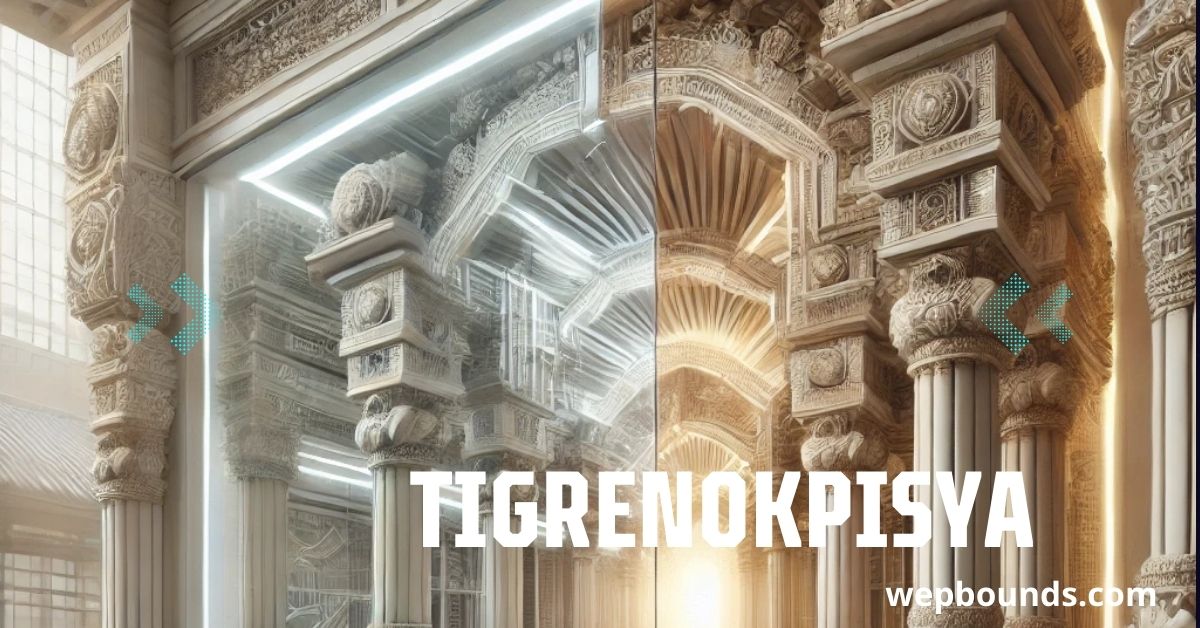Tigrenokpisya is a unique design philosophy that seamlessly blends traditional motifs with contemporary innovation. This fusion results in aesthetics that respect cultural heritage while embracing modern design principles. Unlike conventional approaches that separate the old from the new, tigrenokpisya integrates both elements harmoniously, creating a timeless appeal that resonates across different cultures.
The concept of tigrenokpisya extends beyond mere design; it influences architecture, fashion, interior design, and even product creation. By understanding its roots, characteristics, and global applications, we can appreciate how tigrenokpisya is shaping the future of design.
Understanding Tigrenokpisya
Tigrenokpisya represents a design movement that seeks to preserve historical and cultural elements while making them relevant in contemporary settings. This approach ensures that the past is not forgotten but rather adapted for modern use.
For example, many historical buildings are being renovated using modern materials and construction techniques while keeping their original architectural essence intact. In fashion, traditional patterns and textiles are being reinterpreted into modern clothing styles, making them accessible to new generations.
Tigrenokpisya is not about nostalgia but about transformation—breathing new life into heritage elements and ensuring their survival in a rapidly changing world.

Historical Context
The concept of blending tradition with modernity is not new. Many cultures throughout history have sought to modernize while preserving their heritage. The Renaissance, for instance, revived classical art and architecture but introduced innovative techniques that defined a new era.
Similarly, in Japan, the fusion of traditional and modern design is evident in architecture, fashion, and even urban planning. The famous Tokyo Station is a perfect example, where historical architectural elements have been preserved while integrating state-of-the-art infrastructure.
In the 21st century, the rise of global connectivity has further accelerated this fusion. Countries are increasingly looking for ways to maintain their cultural identities while embracing modern technological advancements. Tigrenokpisya embodies this movement, ensuring that tradition and innovation coexist seamlessly.
Also Read: Weloizovolairz: A Comprehensive Guide to Hybrid Solar-Wind Energy Systems
Key Characteristics of Tigrenokpisya
Cultural Reverence
Tigrenokpisya places a strong emphasis on preserving and honoring cultural heritage. It encourages designers to draw inspiration from historical symbols, crafts, and architectural elements. This approach ensures that traditional aesthetics remain relevant in a modern setting.
Innovative Adaptation
While rooted in tradition, tigrenokpisya is not static. It embraces innovation by incorporating modern technologies, materials, and techniques. This can be seen in contemporary furniture that uses traditional woodworking methods combined with cutting-edge sustainable materials.
Balanced Aesthetics
One of the defining features of tigrenokpisya is the ability to balance the ornate details of traditional design with the simplicity of modern aesthetics. This equilibrium ensures that the final creation is visually appealing and functionally efficient.
Sustainability
Many aspects of traditional design were inherently sustainable, relying on locally sourced materials and handcrafted techniques. Tigrenokpisya adopts this mindset while incorporating modern sustainable practices, such as eco-friendly manufacturing and renewable materials.
Applications of Tigrenokpisya
Tigrenokpisya is not confined to a single industry. It has found applications in various domains, from architecture and fashion to product design.
Also Read: Weloizovolairz: A Comprehensive Guide to Hybrid Solar-Wind Energy Systems
Architecture and Interior Design
In architecture, tigrenokpisya is about integrating historical architectural elements with modern infrastructure. The Suzhou Museum in China, designed by architect I. M. Pei, perfectly embodies this philosophy. The building maintains traditional Chinese architectural elements while using modern glass structures and steel frameworks.
Similarly, in interior design, designers use classic motifs, such as intricate wood carvings and hand-painted murals, within contemporary spaces. This creates a sense of nostalgia without making the environment feel outdated.
Fashion
The fashion industry has embraced tigrenokpisya by blending traditional textiles, embroidery, and patterns with modern cuts and silhouettes. Designers are reinterpreting cultural clothing into modern fashion statements, making them relevant for today’s consumers.
For instance, Indian sarees are now being designed with contemporary fabrics like organza and metallic threads, making them more adaptable to global fashion trends. Similarly, Japanese kimonos have been transformed into chic dresses, preserving the traditional fabric while making them suitable for modern lifestyles.
Product Design
Product designers have also adopted tigrenokpisya, incorporating handcrafted elements into modern appliances and furniture. A great example is handcrafted wooden furniture with embedded LED lighting, where old-world craftsmanship meets contemporary functionality.
Global Influence and Adaptation
Tigrenokpisya is not limited to any one region; it has influenced design practices worldwide. Designers from different cultural backgrounds are now looking for ways to integrate their traditions into modern trends. This has resulted in a cross-cultural exchange, where Western minimalism is being combined with intricate Eastern motifs, and vice versa.
For instance, Scandinavian furniture design, known for its minimalism, has incorporated Japanese wabi-sabi principles, which embrace imperfections and natural aesthetics. This kind of cross-cultural blending exemplifies the growing influence of tigrenokpisya on global design trends.
Also Read: Fuatamcoz: Everything You Need to Know
Challenges and Considerations
While tigrenokpisya offers a harmonious blend of tradition and modernity, there are challenges in implementing this approach effectively.
- Cultural Sensitivity Designers must ensure that they deeply understand the cultural significance of traditional elements to avoid misrepresentation or cultural appropriation.
- Authenticity Authenticity is crucial in preserving the integrity of traditional designs. Collaborating with artisans and cultural experts can help maintain the essence of traditional craftsmanship.
- Balance Striking the right balance between traditional and modern elements is essential. If not done correctly, the design may either feel too old-fashioned or lose its cultural essence.
- Sustainability Ensuring that modern adaptations do not exploit traditional craftsmanship is important. Sustainable sourcing of materials and fair trade practices should be prioritized.
Future of Tigrenokpisya
As interest in sustainable and culturally meaningful design continues to grow, tigrenokpisya is expected to become a dominant trend in multiple industries. More designers will seek to merge heritage aesthetics with modern functionality, leading to innovative and timeless creations.
With advancements in technology, such as 3D printing and AI-generated designs, there is an opportunity to further enhance tigrenokpisya by replicating intricate handcrafted details while making them more accessible to mass production.
Also Read: Zalbel28.2.5w418dsg7: Everything You Need to Know
Conclusion
Tigrenokpisya is more than just a design trend; it is a movement that respects tradition while embracing the future. By thoughtfully blending classical motifs with modern innovations, designers can create unique, functional, and aesthetically pleasing works that honor cultural heritage while staying relevant in today’s fast-paced world.
As this philosophy continues to evolve, it will shape the way we design our homes, fashion, and everyday products, ensuring that tradition and innovation walk hand in hand.
FAQs
What does “tigrenokpisya” mean?
It refers to a design approach that integrates traditional aesthetics with modern innovation, creating a unique and balanced style.
What industries use tigrenokpisya?
Architecture, interior design, fashion, and product design all incorporate elements of tigrenokpisya.
Why is tigrenokpisya important?
It helps preserve cultural heritage while making it relevant for modern applications, ensuring that traditional art and craftsmanship are not lost.
Can tigrenokpisya be sustainable?
Yes, by utilizing eco-friendly materials and supporting traditional artisans, tigrenokpisya promotes sustainability.







Leave a Reply